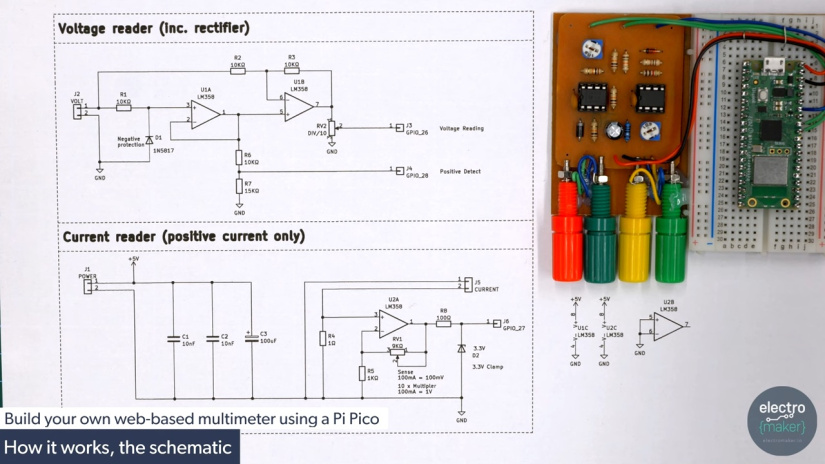Build your own web-based multimeter using a Pi Pico
Multimeters are excellent pieces of kit, but for all their benefits they do come with some disadvantages. But did you know you can use the Raspberry Pi Pico W as a wireless multimeter? Check out how we turned a Pico W into the Electromaker Multimeter W!
The problem with multimeters
Multimeters are an essential piece of testing equipment for electronic engineers as they can measure voltages, currents, resistances, and in some cases, capacitance and inductance. But while multimeters are unbelievably helpful, they can sometimes be overengineered, especially if we only need to measure voltage. At the same time, standard multimeters also lack wireless capabilities, and this makes measuring voltages somewhat tricky. What if your project is on the other side of a workbench? What if it is in the shed? Trying to measure at such distances is not easy, and while wireless multimeters do exist, they are very expensive!
Introducing the Electromaker Multimeter W!
Here at Electromaker we understand the challenges faced by makers, and after putting our best and brightest to the task (myself, of course), we have come up with the ultimate solution; the Electromaker Multimeter W!
Powered by a Raspberry Pi Pico W, the multimeter is able to read both current and voltage simultaneously via two independent inputs while making this data available over a web interface. The use of an external circuit allows for the Pico W to read voltages and currents safely with numerous protection circuits, and the use of a current-to-voltage converter allows the Pico W to use an ADC to measure current.
Thanks to the Pico W’s Wi-Fi capabilities, we use the Pico to host a simple website that can be accessed by any device on the local network. This web page displays the current reading of both ADCs with some additional processing so that the correct voltage and current are shown. At the same time, JavaScript that locally runs in-browser make repeated GET requests for new data, and this allows the web page to show live changes in data without needing to refresh.

To make this project, we put everything onto a piece of clad to show each component clearly, and the circuitry used to convert current into a voltage uses a custom PCB which we machined in-house. Finally, the addition of a few banana sockets enables us to use probes which is far better than trying to attach pieces of wire to a circuit!
The power of web apps
What makes the Electromaker Multimeter W uniquely powerful is that it takes full advantage of web apps. While a typical website shows static information, JavaScript allows for a website to become a web app with the ability to obtain data live and demonstrate it. Finally, the use of a browser-based interface allows any device to communicate with the Electromaker Multimeter W, thus making it cross-platform.
Where can this project go?
There are many different ways we can take this project further. One such option is to bring out the I/O to create a live-streamed logic analyser, while another option would be to create remote-controlled outputs. At the same time, additional ADC channels could be added to make the world’s largest multimeter by channel count. Finally, as the Raspberry Pi Pico W executes Python code, we could even make the Electromaker Multimeter W run remotely programmed routines for manipulating external circuits with scripts.
There is so much more the Electromaker Multimeter W could do, and the sky is the limit! So, if you want to build this or other projects like this, head over to our Electromaker online shop, pick up some parts, and get cracking!












































Leave your feedback...